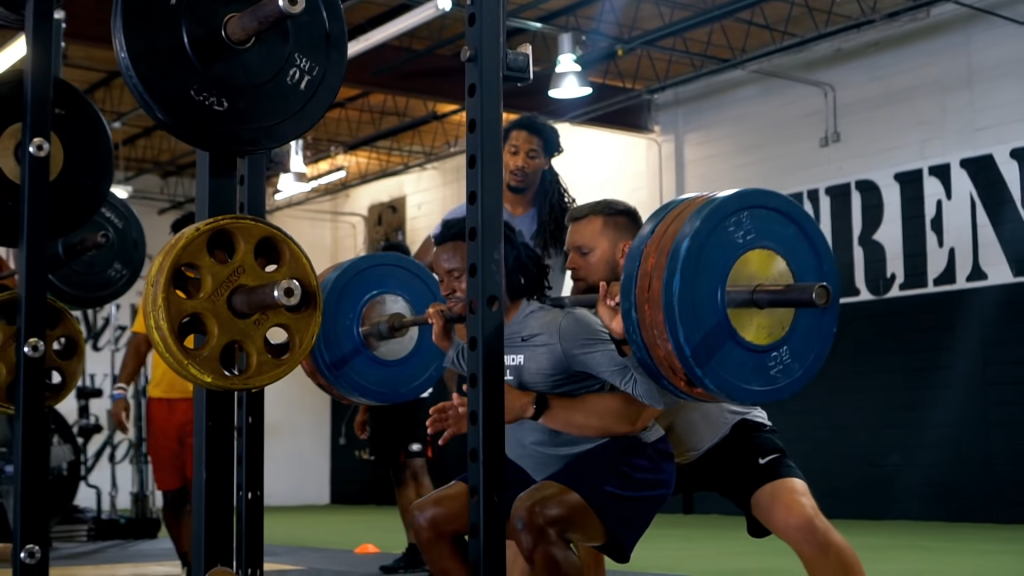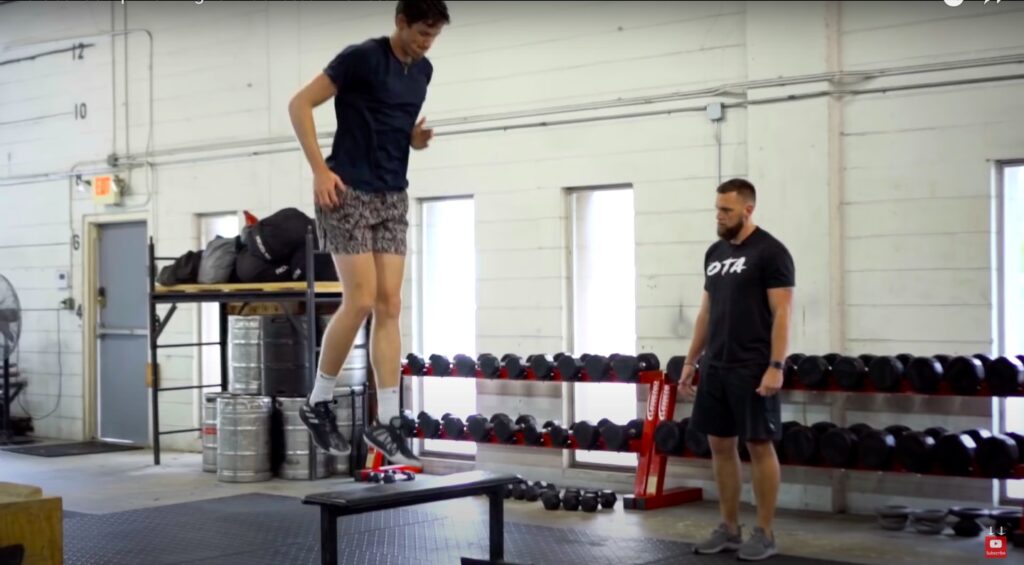Many athletes, competing within in any sport – are missing out on the strength training benefits that weight lifting brings to sports performance.
TYPES OF STRENGTH TRAINING
I’ve seen tons of athletes walk into my gym with no muscle tone, little coordination, poor balance, and almost no strength. After spending an off-season with me, they understand the huge difference strength training makes in their game.
When it comes to understanding strength development in athletes, it’s important to consider both types of strength:
- Absolute: defines the maximum amount of resistance you can overcome.
- Relative: how strong you are in comparison to your own bodyweight.
Categorizing these two areas of strength means there can be a standard which athletes should hit aim to hit depending on their level of play and the particular sport.
The biggest impression I want to make is that, despite the many resources out there on strength training benefits, your goal as the athlete is to narrow down exactly which modalities will benefit you and your game.
My role as a strength and conditioning coach is to show you just how to amplify your training, so that it looks as close to competition as possible.
Let’s take a football player’s strength training for example:

There’s plenty of guys who can squat a ton of weight, but will typically put up really low numbers in their broad jumps and vertical jumps.
Consider how that athlete might move on the field…
With that particular athlete, it would be a waste of time to go and work on absolute strength since that’s already their strong suit. If I had an hour to train, I’m not going to use a ton of time in that session to build up the athlete’s deadlift and squat.
Rather, your concern should be on transferring absolute strength ability into relative strength potential.
Now, I don’t want you to take this as me blowing off the importance of absolute strength to achieve the best strength training benefits.
Your training should always include some kind of compound lift such as squat and deadlift, and utilize rep ranges between 1-5 and focus on low volume, with high intensity.
Consider the multitude of training tools that will allow you to grow within your sport:
As you plan out your strength training for the off-season and select various modalities, be sure to consider your greatest needs.
These will be the areas in which you struggle most, and should be at the forefront of your sessions.

STRENGTH TRANSFERENCE
One of the greatest strength training benefits for an athlete is the ability to hit certain lifting standards.
Sports such as football, basketball, baseball (sometimes even soccer), require that you can hit certain strength standards as you play at more advanced levels.
If this is the case, your goal is to be regularly lifting within a particular range. Only then, can you start shifting your focus onto other lifts and training modalities. This is popular within linear periodization.
For most athletes ranging across most sports, I use the trap bar deadlift for a main strength standard.
This is one of the best lifts, (a cross between a squat and a hinge) for training hip extension and transferring absolute strength into sport movement.
Athlete should look to sit between 2.2 to 2.6 times their bodyweight.

Once an athlete can comfortably lift between this range, I’m usually confident they have the sufficient strength to work on agility and vertical power.
At this point, some athletes can still have trouble with sprints and drills like the broad jump. However, they have enough absolute strength to hit the right trap bar deadlift numbers. This tells me as a coach that we can begin turning their strength into game-like skills.
Transference works along the force/speed continuum of kinetics.
Transference means that as your muscles become stronger and more finely attuned to the movement, they can work to overcome the same resistance as before, but faster.
To see major strength training benefits, you need to choose the right movements and drills to develop transference within your sport.
Here’s a few methods to hit within your training:
- Triphasic Training
- Plyometrics
- Jump specific training
- Med Ball/Power Training
Most of these modalities are focused on getting you to move faster. After developing enough strength with lifts like the trap bar deadlift, squat, and bench press try using quicker, more powerful movements.
One of the simplest ways to look at this is: you don’t lift weights on the field.
BEST STRENGTH TRAINING BENEFITS

For any of those athletes that are dead-set on putting up heavy weights, consider shifting your mindset. You can have the strongest squat on the team, but how useful is it that if you’re missing passes out on the field?
Here’s just a few takeaway’s of the best strength training benefits for athletes:
- Builds absolute strength so you can move efficiently on the field.
- Trains you to hit “standard” strength numbers.
- Enhance relative strength.
The Athletic Strength Formula, puts all this together for you so you can have your strongest off-season yet.
If you’ve been struggling to increase your numbers, or are looking for a reason to start strength training: THIS IS IT.
This program guides you off percentages, and addresses your weakness through ROM training.
With athlete reviews like this:
“Added over 90lbs to my Bench and Squat”
“Increased squat drastically in just 3 months”
along with a 90 day Money Back Guarantee, the Athletic Strength Formula could be the very edge you need for your best season yet.
Gain Elite Strength Training Benefits, Become an Athletic Freak, and Dominate your Competition.
